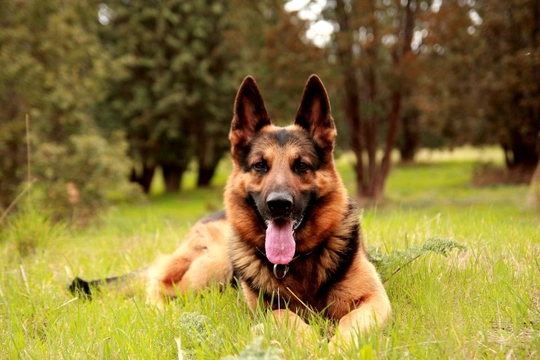
How to tell if you’re over exercising your German shepherd
The German shepherd dog breed is one of the most enduringly popular in the UK, and for good reason. They are intelligent, very loyal, quick to learn and very versatile, being well suited to working roles, canine sports, and life as pets as well.
They are also a breed with lots of energy and superior levels of endurance, which means that providing them with enough opportunities to exercise and stretch their legs throughout the day is important. However, there is such as thing as providing too much exercise for a dog, and when it comes to a hard-working breed like the German shepherd, your dog may continue even when they have had enough because they want to please you.
Compounding this, the German shepherd dog breed is one of those with higher than normal risk factors for hip dysplasia, which can be worsened or triggered by too much exercise, or exercise of the wrong kind.
All of these things mean that it is important to be able to assess when your German shepherd has had enough exercise, and know how to tell if you’re pushing your dog too hard and should ease off a little. In this article, we will share some of the signs that can tell you that you’re over exercising your German shepherd.
Overheating
Too much exercise will cause your dog to overheat, and whilst this is more common in the summer when the weather is hotter (particularly given the thick German shepherd coat) it can occur at any time of the year.
It is fine for your dog to work hard when exercising, and pant and get out of breath – but they should not spend the main part of their exercise sessions in this way, and there should be plenty of breaks to cool down, have some water, and get up their second wind.
Stiffness and sore muscles
A fit, active dog that spends a lot of time physically active shouldn’t suffer from stiffness and sore muscles after exercise, and if you find that this is the case, it is a warning that your exercise session has gone too far. Stiffness and muscle soreness may not develop until the day after a vigorous exercise session, and if you find that this has occurred, take your dog on a gentle, light walk to loosen up their muscles, and reconsider your approach in the future.
Joint damage and injuries
Lots of running around on hard ground, jumping and climbing all place strain on your dog’s joints, which can cause problems like arthritis later in life as well as exacerbating or triggering hereditary issues like hip dysplasia. Manage your dog’s exercise to protect their joints, and keep a close eye out for any signs of problems.
Carelessness and errors
If your dog is tired and you keep pushing them to perform, they will begin to make errors and become more careless, which can lead to accidents. Perhaps your dog is taking shortcuts, won’t bring their ball back, or is not fully executing commands – these aren’t necessarily signs of laziness or wilful disobedience, but your dog may simply be too tired to continue properly.
Damage to the paws
If your dog’s paws are scuffed, sore, or otherwise showing signs of wear and tear or damage, your dog is either exercising too much, or exercising too hard on the wrong type of surfaces.
Take signs of damage to the paws as an indication that you need to rework your play, walks or training sessions to be less demanding.
Reluctance or refusal to exercise or continue to exercise
German shepherds are very keen to please their owners, and will continue to work long after they are tired and wish to stop. If your dog is reluctant to walk or carry on with a game, this almost certainly means that they are very tired and no longer willing or able to perform, and you should respect this.
Unwillingness to follow commands
If your normally responsive, obedient dog simply refuses to follow commands relating to exercise and physical activity, you are either asking too much of them or they have come to dislike the whole process, because they know it will leave them feeling sore and unhappy.
Inability to maintain weight
The more active your dog is, the more they will need to eat to support their energy levels and maintain a healthy weight. However, if your dog can’t maintain a high enough weight and is overly lean, this may indicate that they need a little less exercise rather than more food.
Speak to your vet about the right diet for the German shepherd and how to match it to their exercise requirements, and to get some guidance on the appropriate level of exercise to provide for your dog, taking into account their health and life stage.



